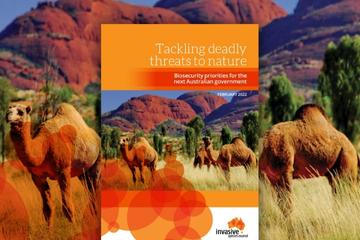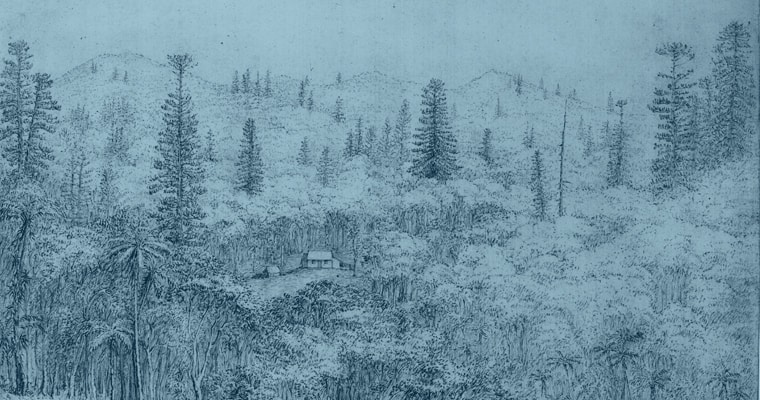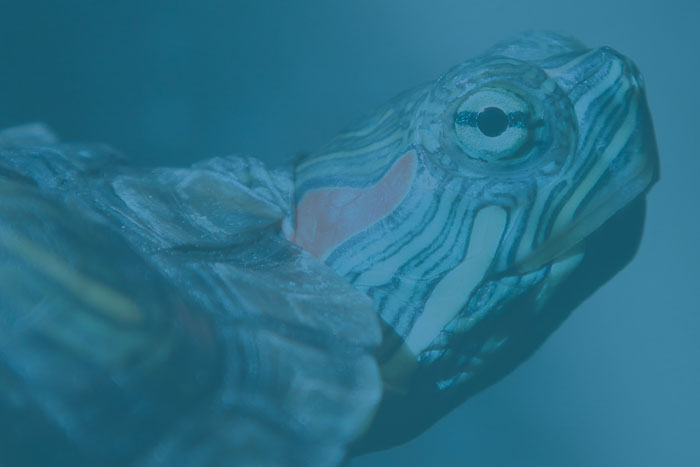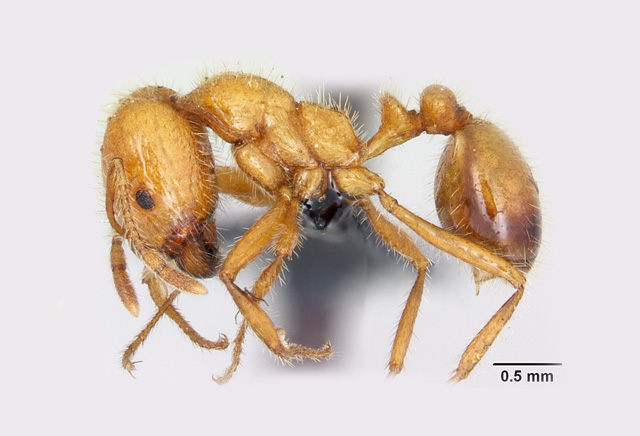
Tackling deadly threats to nature: Biosecurity priorities for the next Australian government
Initiatives and policies to improve Australia’s capacity to keep nature safe from new and established invasive species.

Initiatives and policies to improve Australia’s capacity to keep nature safe from new and established invasive species.

A series of fact sheets on the 14 distinct native plant communities on Norfolk Island.

For the first time ever the native vegetation of Norfolk Island has been mapped, both as it exists now and before European arrival in 1750.

Domestic cats were introduced to Australia with the First Fleet in 1788. They are now one of the most damaging invasive species worldwide, and in Australia have been a major driver of mammal extinctions.

Our joint submission to the Australian Government’s inquiry into the problem of feral and domestic cats includes strengthening regulations for cat-free islands.

December 2018
Strengthening environmental biosecurity – stopping new species arriving and establishing and limiting the harm caused by the worst invasive species – must be a priority of the highest order to save Australian species.

Submitted: September 2018A submission to the Senate inquiry into Australia’s faunal extinction crisis that addresses invasive species as extinction drivers, the importance of key threatening processes and island biosecurity and the need for ambition, inspiration, prevention and monitoring.

November 2017
With the Australian Government assuming responsibility for pre-border and border biosecurity there is now potential for Norfolk Island to be an exemplar in conservation-based island biosecurity.

Seven national priorities for invasive species reform that deliver long-term cost savings, stem biodiversity losses and enhance agricultural productivity.

Probably introduced into Australia by early European settlers tropical fire ants are highly aggressive and attack any intruder who disturbs their nest.

Initiatives and policies to improve Australia’s capacity to keep nature safe from new and established invasive species.

A series of fact sheets on the 14 distinct native plant communities on Norfolk Island.

For the first time ever the native vegetation of Norfolk Island has been mapped, both as it exists now and before European arrival in 1750.

Domestic cats were introduced to Australia with the First Fleet in 1788. They are now one of the most damaging invasive species worldwide, and in Australia have been a major driver of mammal extinctions.

Our joint submission to the Australian Government’s inquiry into the problem of feral and domestic cats includes strengthening regulations for cat-free islands.

December 2018
Strengthening environmental biosecurity – stopping new species arriving and establishing and limiting the harm caused by the worst invasive species – must be a priority of the highest order to save Australian species.

Submitted: September 2018A submission to the Senate inquiry into Australia’s faunal extinction crisis that addresses invasive species as extinction drivers, the importance of key threatening processes and island biosecurity and the need for ambition, inspiration, prevention and monitoring.

November 2017
With the Australian Government assuming responsibility for pre-border and border biosecurity there is now potential for Norfolk Island to be an exemplar in conservation-based island biosecurity.

Seven national priorities for invasive species reform that deliver long-term cost savings, stem biodiversity losses and enhance agricultural productivity.

Probably introduced into Australia by early European settlers tropical fire ants are highly aggressive and attack any intruder who disturbs their nest.

Initiatives and policies to improve Australia’s capacity to keep nature safe from new and established invasive species.

A series of fact sheets on the 14 distinct native plant communities on Norfolk Island.

For the first time ever the native vegetation of Norfolk Island has been mapped, both as it exists now and before European arrival in 1750.

Domestic cats were introduced to Australia with the First Fleet in 1788. They are now one of the most damaging invasive species worldwide, and in Australia have been a major driver of mammal extinctions.

Our joint submission to the Australian Government’s inquiry into the problem of feral and domestic cats includes strengthening regulations for cat-free islands.

December 2018
Strengthening environmental biosecurity – stopping new species arriving and establishing and limiting the harm caused by the worst invasive species – must be a priority of the highest order to save Australian species.

Submitted: September 2018A submission to the Senate inquiry into Australia’s faunal extinction crisis that addresses invasive species as extinction drivers, the importance of key threatening processes and island biosecurity and the need for ambition, inspiration, prevention and monitoring.

November 2017
With the Australian Government assuming responsibility for pre-border and border biosecurity there is now potential for Norfolk Island to be an exemplar in conservation-based island biosecurity.

Seven national priorities for invasive species reform that deliver long-term cost savings, stem biodiversity losses and enhance agricultural productivity.

Probably introduced into Australia by early European settlers tropical fire ants are highly aggressive and attack any intruder who disturbs their nest.
Get our blog the Feral Herald delivered to your inbox.
Our protected areas are being trashed, trampled, choked and polluted by an onslaught of invaders. Invasive species are already the overwhelming driver of our animal extinction rate, and are expected to cause 75 of the next 100 extinctions.
But you can help to turn this around and create a wildlife revival in Australia.
From numbats to night parrots, a tax-deductible donation today can help defend our wildlife against the threat of invasive weeds, predators, and diseases.
As the only national advocacy environment group dedicated to stopping this mega threat, your gift will make a big difference.
A silent crisis is unfolding across Australia. Every year, billions of native animals are hunted and killed by cats and foxes. Fire ants continue to spread and threaten human health. And the deadly strain of bird flu looms on the horizon. Your donation today will be used to put the invasive species threat in the media, make invasive species a government priority, ensure governments take rapid action to protect nature and our remarkable native wildlife from invasives-led extinction, death and destruction.
If you are having trouble submitting a form, please read this guide.
Please fill out the following form and one of our team will be in contact to assist as soon as possible. Please make sure to include any helpful information, such as the device you were using (computer, tablet or mobile phone) and if known, your browser (Mozilla Firefox, Chrome, Safari etc)
"*" indicates required fields
Dear Project Team,
[YOUR PERSONALISED MESSAGE WILL APPEAR HERE.]
I support the amendment to the Kosciuszko National Park Wild Horse Heritage Management Plan to allow our incredible National Parks staff to use aerial shooting as one method to rapidly reduce feral horse numbers. I want to see feral horse numbers urgently reduced in order to save the national park and our native wildlife that live there.
The current approach is not solving the problem. Feral horse numbers have rapidly increased in Kosciuszko National Park to around 18,000, a 30% jump in just the past 2 years. With the population so high, thousands of feral horses need to be removed annually to reduce numbers and stop our National Park becoming a horse paddock. Aerial shooting, undertaken humanely and safely by professionals using standard protocols, is the only way this can happen.
The government’s own management plan for feral horses states that ‘if undertaken in accordance with best practice, aerial shooting can have the lowest negative animal welfare impacts of all lethal control methods’.
This humane and effective practice is already used across Australia to manage hundreds of thousands of feral animals like horses, deer, pigs, and goats.
Trapping and rehoming of feral horses has been used in Kosciuszko National Park for well over a decade but has consistently failed to reduce the population, has delayed meaningful action and is expensive. There are too many feral horses in the Alps and not enough demand for rehoming for it to be relied upon for the reduction of the population.
Fertility control as a management tool is only effective for a small, geographically isolated, and accessible population of feral horses where the management outcome sought is to maintain the population at its current size. It is not a viable option to reduce the large and growing feral horse population in the vast and rugged terrain of Kosciuszko National Park.
Feral horses are trashing and trampling our sensitive alpine ecosystems and streams, causing the decline and extinction of native animals. The federal government’s Threatened Species Scientific Committee has stated that feral horses ‘may be the crucial factor that causes final extinction’ for 12 alpine species.
I recognise the sad reality that urgent and humane measures are necessary to urgently remove the horses or they will destroy the Snowies and the native wildlife that call the mountains home. I support a healthy national park where native species like the Corroboree Frog and Mountain Pygmy Possum can thrive.
Dear Project Team,
[YOUR PERSONALISED MESSAGE WILL APPEAR HERE.]
I support the amendment to the Kosciuszko National Park Wild Horse Heritage Management Plan to allow our incredible National Parks staff to use aerial shooting as one method to rapidly reduce feral horse numbers. I want to see feral horse numbers urgently reduced in order to save the national park and our native wildlife that live there.
The current approach is not solving the problem. Feral horse numbers have rapidly increased in Kosciuszko National Park to around 18,000, a 30% jump in just the past 2 years. With the population so high, thousands of feral horses need to be removed annually to reduce numbers and stop our National Park becoming a horse paddock. Aerial shooting, undertaken humanely and safely by professionals using standard protocols, is the only way this can happen.
The government’s own management plan for feral horses states that ‘if undertaken in accordance with best practice, aerial shooting can have the lowest negative animal welfare impacts of all lethal control methods’.
This humane and effective practice is already used across Australia to manage hundreds of thousands of feral animals like horses, deer, pigs, and goats.
Trapping and rehoming of feral horses has been used in Kosciuszko National Park for well over a decade but has consistently failed to reduce the population, has delayed meaningful action and is expensive. There are too many feral horses in the Alps and not enough demand for rehoming for it to be relied upon for the reduction of the population.
Fertility control as a management tool is only effective for a small, geographically isolated, and accessible population of feral horses where the management outcome sought is to maintain the population at its current size. It is not a viable option to reduce the large and growing feral horse population in the vast and rugged terrain of Kosciuszko National Park.
Feral horses are trashing and trampling our sensitive alpine ecosystems and streams, causing the decline and extinction of native animals. The federal government’s Threatened Species Scientific Committee has stated that feral horses ‘may be the crucial factor that causes final extinction’ for 12 alpine species.
I recognise the sad reality that urgent and humane measures are necessary to urgently remove the horses or they will destroy the Snowies and the native wildlife that call the mountains home. I support a healthy national park where native species like the Corroboree Frog and Mountain Pygmy Possum can thrive.